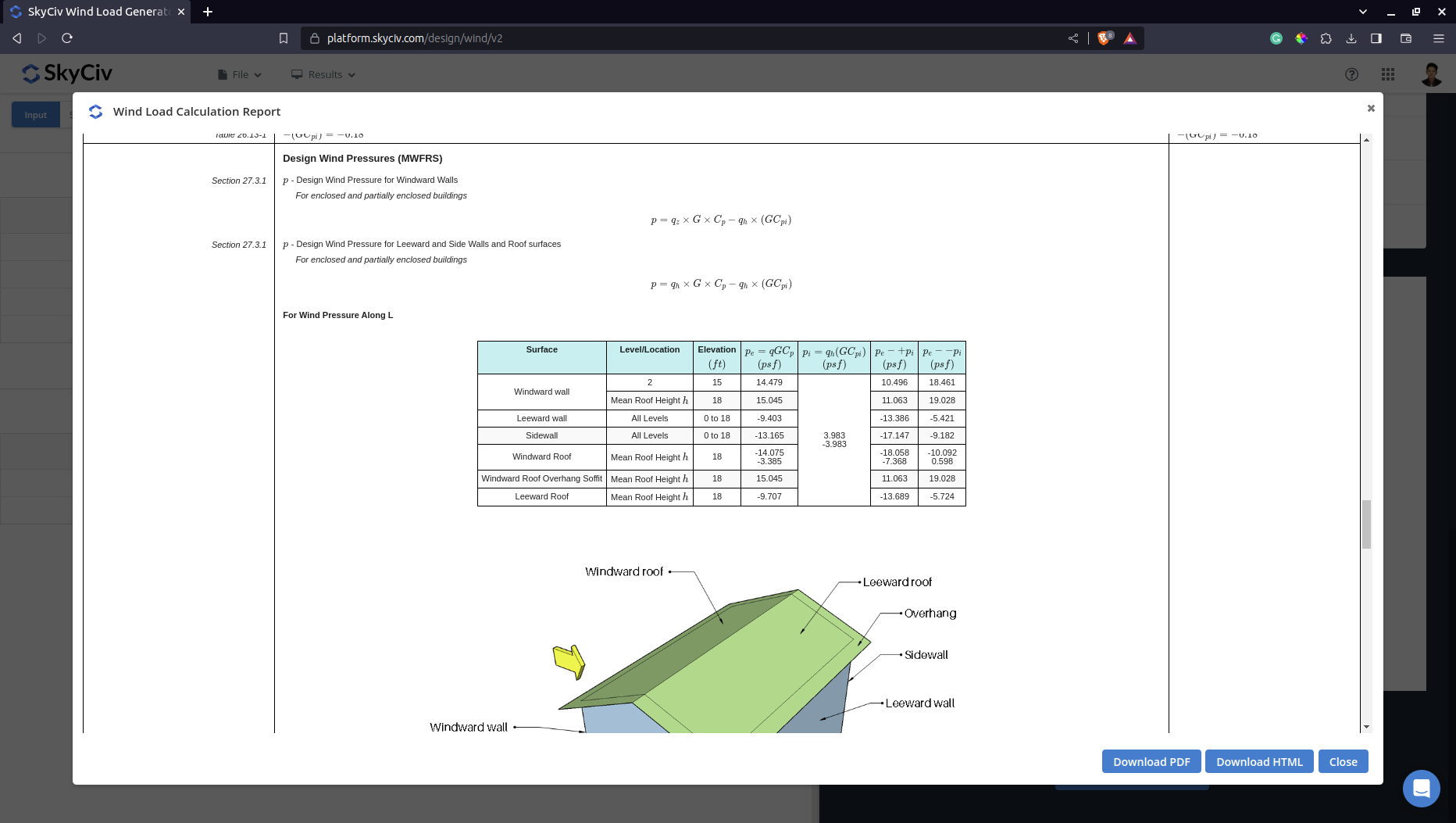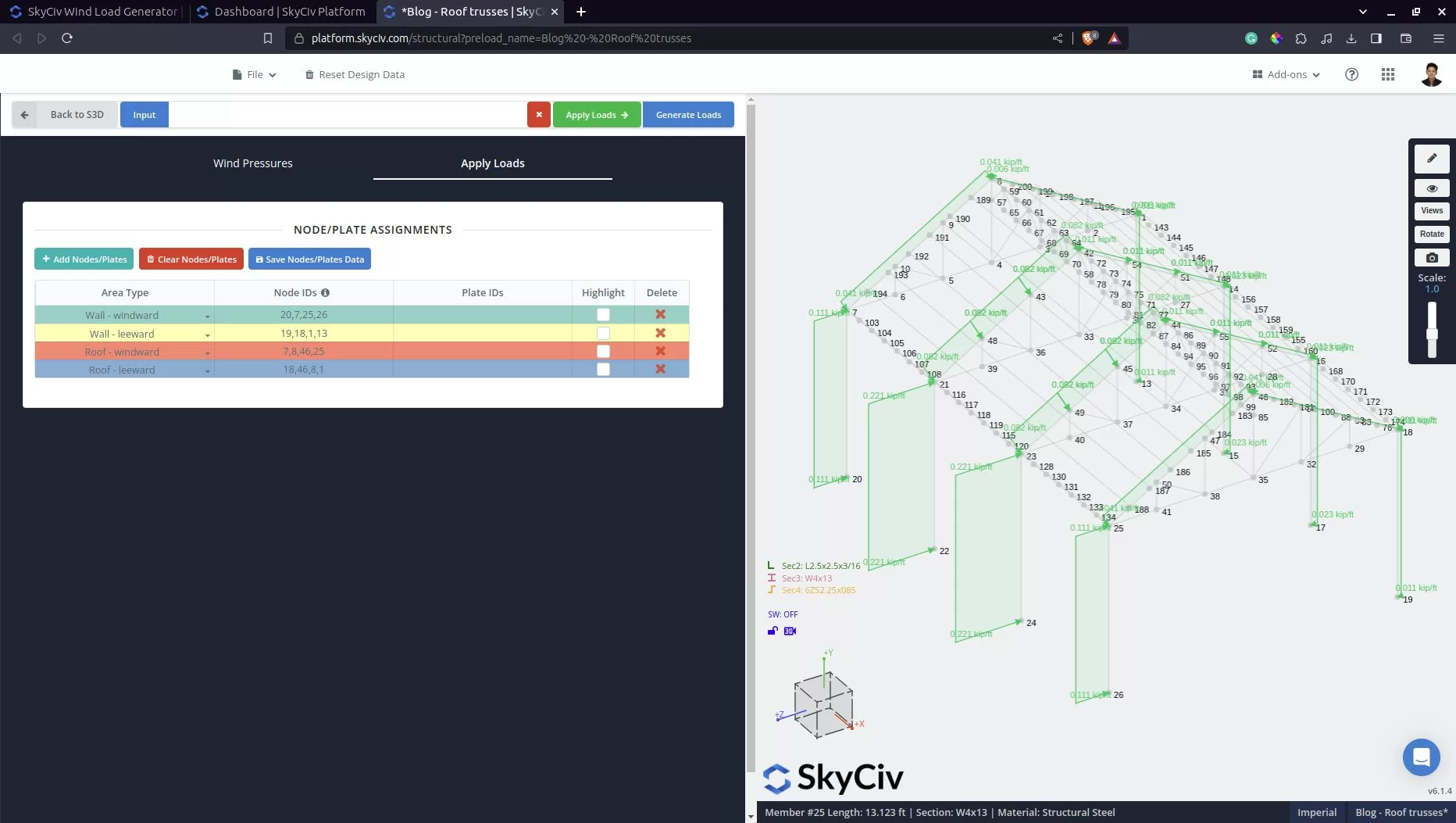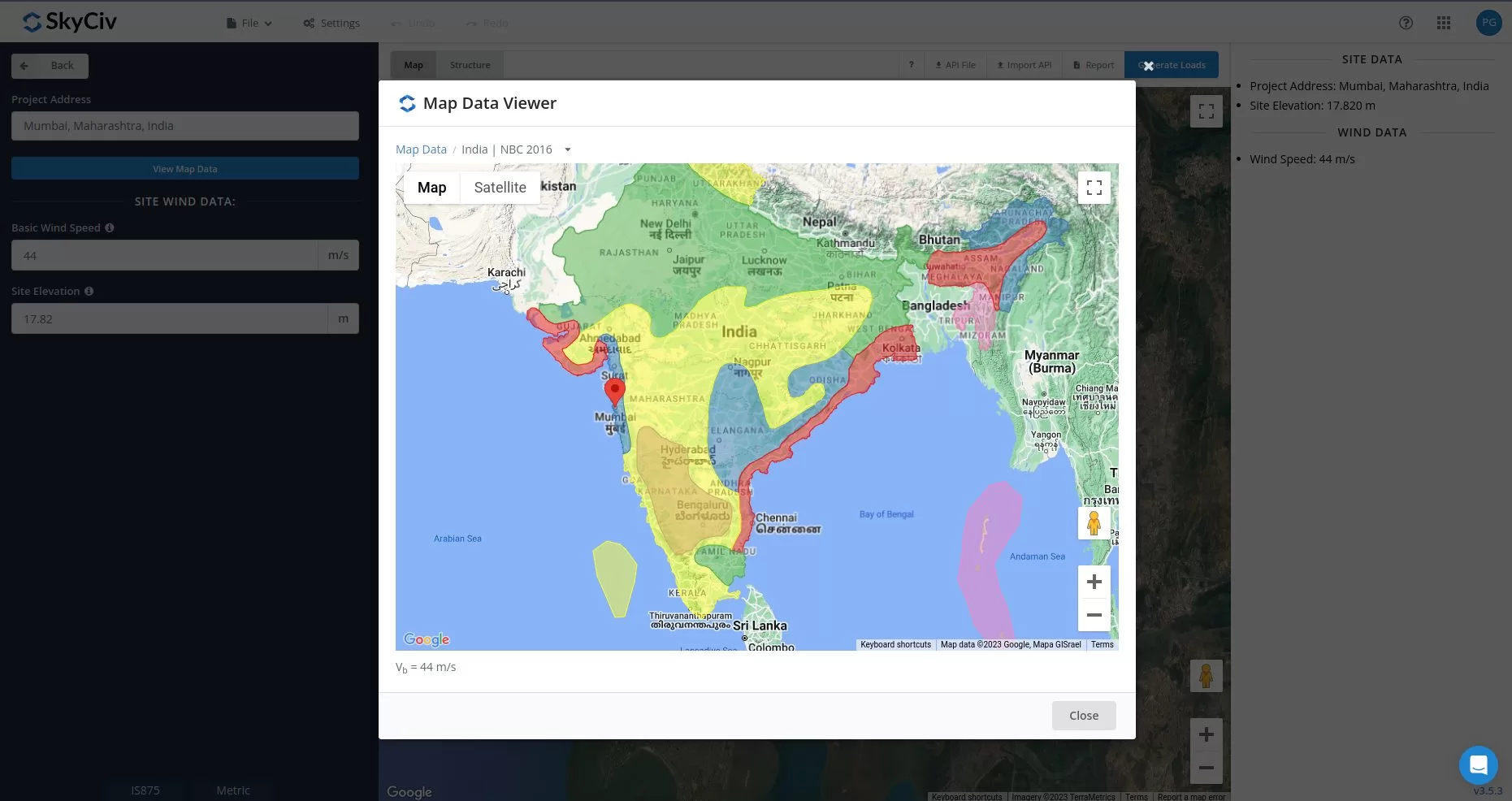Wind Pressure Calculator, Snow Calculator, and Seismic Load Calculator
Easily calculate Wind Speeds, Pressures, and Forces along with Snow and Seismic Loads by Location.
Based on ASCE 7-10/ASCE 7-16/ASCE7-22 (wind), EN 1991 (wind and snow), NBCC 2015 (wind and snow), NBCC 2020, AS/NZS 1170, IS 875 (wind), NSCP 2015 (wind), CTE DB SE-AE (wind), IS 875, and CFE Viento.
About the Wind, Snow, and Seismic Load Calculator
What are Wind Loads?
Wind loads are an important consideration in structural engineering, as they can have a significant impact on the design and safety of a structure. Understanding and properly accounting for wind loads is essential for ensuring the structural integrity of a building or other structure.
Wind loads are caused by the movement of air and can be influenced by various factors, including the speed and direction of the wind, the shape, and size of the structure, and the surrounding terrain. These loads can be either static, meaning that they are constant over time, or dynamic, meaning that they change over time. In addition, wind loads vary depending on a structure's location and climate region.
Structural engineers use various methods to calculate wind loads, including wind tunnel testing, computer simulations, and empirical data. These methods allow engineers to predict the wind loads that a structure will experience and design it accordingly.
Wind loads are often also referred to as Wind Pressures. These pressures act over the surface area of a structure, such as a wall or roof. This distribution of pressure over an area means we can calculate the equivalent wind load force that can be used for structural design calculations.
Engineers must consider the wind loads that a structure will experience in different directions and at different heights. This is particularly important for tall structures, such as skyscrapers, which are more susceptible to wind loads due to their height.
What are Snow Loads?
Snow loads are caused by the accumulation of snow on a structure and can vary greatly depending on the location and climate. In areas with heavy snowfall, the snow load on a structure can be quite significant and must be taken into account during the design process.
Snow loads are particularly important for structures with sloped roofs, as the snow load can vary significantly depending on the slope of the roof.
To mitigate the effects of snow loads, structures can be designed with certain features, such as snow guards and heated gutters. These features can help to reduce the impact of snow loads on a structure and increase its stability.
What are Seismic Loads?
Seismic loads, also known as earthquake loads, are a critical consideration in structural engineering, as they can have a significant impact on the design and safety of a structure.
Seismic loads are caused by the ground motion during an earthquake and can vary greatly depending on the location and magnitude of the earthquake. In areas with a high risk of earthquakes, the seismic loads on a structure can be quite significant and must be taken into account during the design process.
Tall structures, such as skyscrapers, are more susceptible to seismic loads due to their height.
To mitigate the effects of seismic loads, structures can be designed with certain features, such as base isolation systems and energy dissipation systems.
In addition to designing a structure to withstand earthquake loads, it is also important to consider the maintenance and upkeep of the structure. This includes regularly inspecting and maintaining the structure to ensure that it is in good condition and can withstand any future potential earthquake loads.
About the Calculator
Adding to SkyCiv's already list of free tools, is the Wind Load and Snow Load Calculator for ASCE 7-10/ ASCE 7-16 / ASCE7-22, EN 1991 (wind and snow), NBCC 2015 (wind and snow), NBCC 2020 (wind and seismic) AS/NZS 1170, IS 875-3 (wind), NSCP 2015 (wind and seismic), CTE DB SE-AE (wind), and CFE Viento. This easy to use calculator will display the wind speed and ground snow load by location via a wind speed and snow load map as prescribed by the above building codes. The software also allows you to add more information about your building in order to determine the required wind and snow pressures to be applied.
There are some limitations to the free version, it will allow you to get the local wind speed for 3 searches a day, and a number of building type pressures.
This wind load calculator has been pulled from our full Structural 3D software, it allows you to determine the wind pressure by location and apply it directly to your structural model. You can edit the input to re apply, and as you change your model the wind loads will automatically adjust, so you don't have to delete and reapply!
Wind Speed and Snow Load Calculator
The first step of the software is to pull the wind speed or ground snow load out of the design code based on the user input location or zip code. Simply enter in a location (street address, longitude/latitude, zip code) and the software will give you the corresponding wind speed or ground snow load by location as per the design standard. Entering the location alone will give you the wind speed and ground load, but you can also get the wind and snow pressures and locations from entering some additional variables for the building type.
Wind and Snow Pressure Calculator
Once the wind speed has been calculated, the user can provide additional information regarding the building (such as building height, type and cladding) to get the wind pressure (wind load) based on ASCE 7-10/ASCE 7-16, ASCE 7-22, EN 1991-1-4, NBCC 2015, NBCC 2020, AS/NZS 1170.2, IS 875-3, NSCP 2015, CTE DB SE-AE, and CFE provisions. It provides the wind load calculations on uplift, leeward, windward and roof forces of a building. The wind pressure calculations will show the wind pressure, and area where the pressures are to be applied. Moreover, the snow pressures can also be generate wind load calculation using ASCE 7-10/ASCE 7-16, EN 1991-1-3 (select countries), NBCC 2015, and AS/NZS 1170.3 where you can obtain the corresponding balanced and unbalanced snow load based on the roof profile of your building. Some of the building types for the wind load and snow load calculations are locked for the free version, but our cost-effective subscriptions will give you access to everything you need for wind and snow loading!
Seismic Load Calculation
SkyCiv now supports seismic loads based on ASCE 7-16, NZS 1170.5, NSCP 2015, and NBCC 2020! Determine the seismic base shear for your structure using the Equivalent Static Force method. Generate the design response spectrum based on these reference codes and apply it directly to your S3D model!
Detailed Wind, Snow, and Seismic Load Calculations
SkyCiv offers a full design report to show the calculations of the wind and snow pressures, so you can see exactly how the software calculated the wind pressures, snow load, and generate seismic load calculation report. These are important for any engineer, so they can follow the software's assumptions, calculations and design code references. SkyCiv believes in full transparency, so detailed structural reports is a common with all of our structural software. Upgrade and view the full reports or use this link to see our sample detailed wind load.
ASCE 7, AS/NZS 1170, NBCC 2015, EN 1991, plus more...
Currently the above wind force software is based on the US, Australia, Canada, select European countries, India, Philippines, Spain, and Mexico to help engineers determine their design wind and snow pressures for buildings. This is required in a lot of design or building codes and can often be the governing load case in areas with high winds. We are always looking for ways to improve - so if you don't find what you're looking for - please let us know! We are very open and really appreciate feedback and suggestions to improve.
About SkyCiv
SkyCiv offers a wide range of Cloud Structural Analysis and Design Software for engineers. As a constantly evolving tech company, we're committed to innovating and challenging existing workflows to save engineers time in their work processes and designs.





